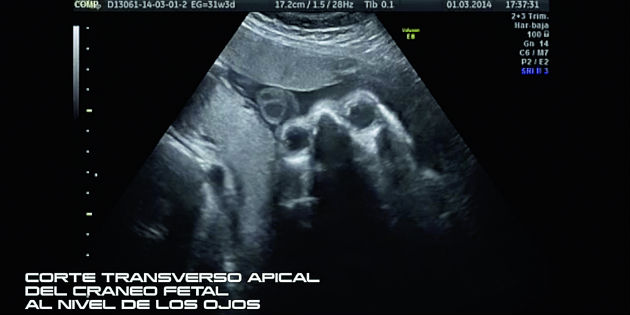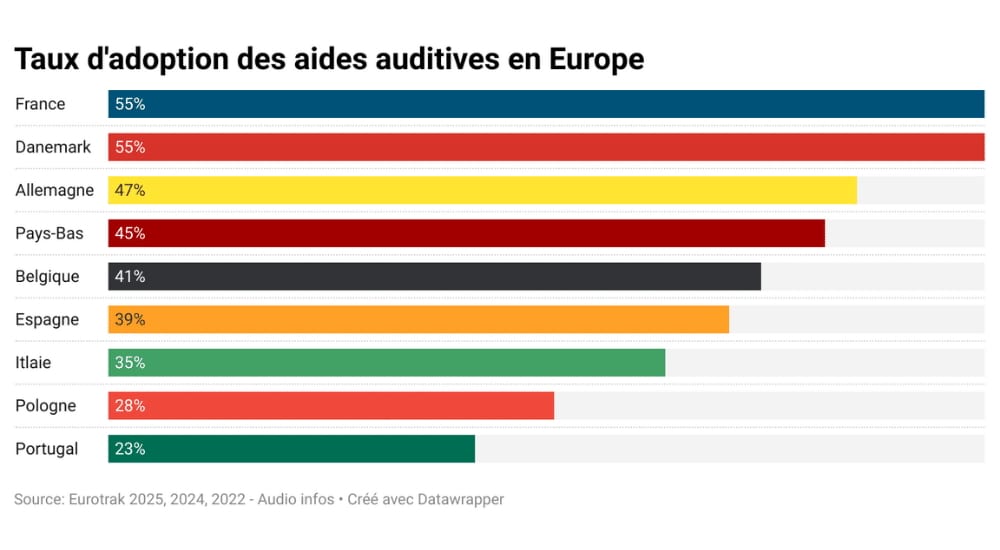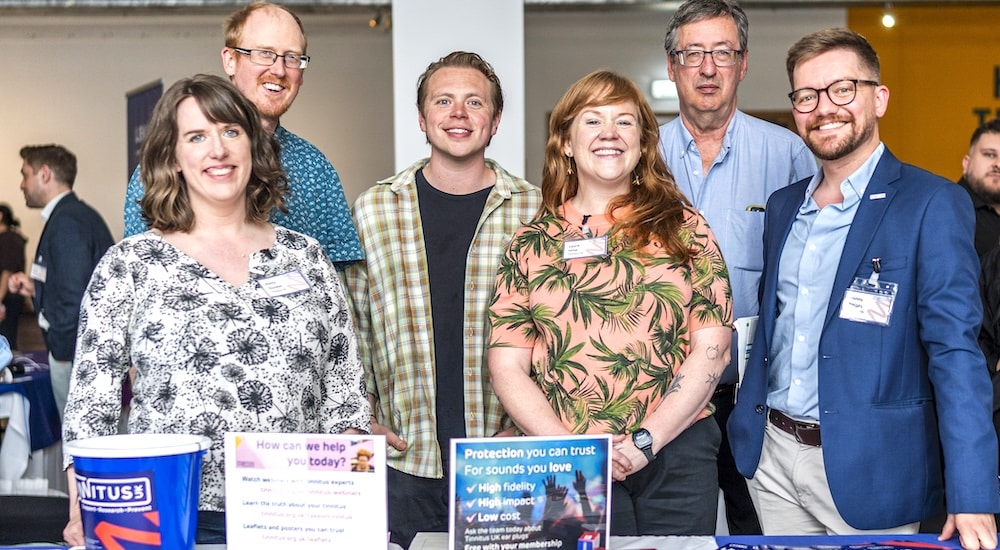Mexico: Hearing treatment immediately following birth
NHS
A Mexican research group is developinga protocol to allow for detection ofhearing problems at the prenatal stage.

Sucha technique would open the way to beginning rehabilitation ofnewborn babies immediately following birth.
The research team behind this initiative comes from the La LagunaOtology Foundation, which is working jointly with the NationalAutonomous University of Mexico’s Centre for Neural Development,and Cochlear Academy. These entities have joined forces to carryout an international multicentre study for“Uterine Hearing Screening” with the aim of early detection ofpossible deafness in all foetuses.
The protocol involves carrying out a descriptive study on a censalsegment of pregnant women between 20-and-35-years-old whoattend participating medical centres between weeks 32 and 36 oftheir gestation; they will be submitted to an obstetric ultrasoundto check whether the baby receives the sound stimulus. Followingbirth, an otoacoustic emissions test will be carried out on the babyto check the integrity of their external cochlear hair cells.
Detection procedure
“Cochleopalpebral reflex (CR) is considered a reliable auditoryresponse when it is immediate with a latency of 0.5 seconds. In1984, Lori Ann Kuczwara and colleagues validated a study of 284foetuses at week 28, provoking CR. They found the system to be good,quick, non-invasive and, above all, an easily-observable response.Falkner pointed out, after 1966, that cochleopalpebral reflex hadnever been produced in deaf children from an acoustic stimulus,”explained Dr. Marcelino Covarrubias, otological surgeon, chairmanof the La Laguna Otology Foundation, and medical director of theÁngeles Torreón Hospital.
Through the use of a foetal echosonogram, the baby’s face is located,and an electroacoustic transducer (patented L1-40) is placed on themother’s belly “which generates a sound stimulus with an intensityand frequency calculated according to the attenuation resulting fromthe passing of the sound through the maternal abdomen, and thisis able to provoke the cochleopalpebral reflex in the foetus while,at the same time, the change in foetal cardiac frequency is noted,and this is taken as a positive response indicating that the foetusis hearing,” explains Dr. Covarrubias.
Use of the L1-40 transducer allows for the development of aneconomical, and easy universal cover strategy to complement theefforts now being made in the area of early detection of deafness.The L1-40 transducer is compatible with all makes of ultrasoundequipment. The procedure is innocuous and will be useful for optimising and focusing hearing testing on the newborn. These are alsorequired “to help detect cases of auditory neuropathy, which at themoment can escape screening of the newborn through otoacousticemission testing,” points out Dr. Melissa Correa Flores, a specialistin audiology, otoneurology, and speech-language pathology, subspecialistin applied phoniatrics for special groups, and memberof the La Laguna Otology Foundation and the Oír Bien centre inthe town of Zapopan.
The protocol being promoted by Mexican researchers is aimedat making the L1-40 transducer known worldwide so that it canbe adapted to any ultrasound equipment, enabling all pregnantwomen to access this diagnostic method during the final threemonths of pregnancy.

“We are not trying to replace brainstem auditory evoked potentials;we just hope that this protocol will become the predecessor ofthose and that patients not generating a positive response will bechanneled to a specialist from the moment of birth,” explains Correa.
Advantages over neonatal hearing screening
With the aim of screening the highest possible number of foetusesusing this procedure, the study will need to become part of theanalyses routinely carried out by practices caring for pregnantmothers. On average in Mexico, a woman will undergo betweenthree and four ultrasound examinations during pregnancy in orderto measure the health parameters of the foetus.
Early diagnosis of deafness is currently carried out after birth; it isa fact that a high percentage of cases in Mexico go without evaluationdue to a shortage of equipment and trained specialists, orthrough lack of knowledge of the diagnostic study.
Despite a neonatal hearing screening programme being implementedin 2010 in Mexico, there is still a lack of technological toolsfor early detection of hearing loss. “Early diagnosis of deafness iscurrently attempted when children are born, although regrettably theAmerican Academy of Otolaryngology claims that in 2015 aroundone million of them did not have access to the hearing examination of the newborn, so it is necessary to increase the programme’scoverage and perfect it,” explains Melissa Correa.
“With current studies for the newborn – transient otoacousticemissions or brainstem auditory evoked potentials – the integrity ofexternal hair cells is all that is checked, and the auditory pathwaysare not evaluated, so we could be leaving 11% of patients withauditory dys-synchrony without early detection,” assures Dr. Correa.In line with official 2012 data, between 2,000 and 6,000 childrenMarcelino Covarrubias encabeza el equipo de investigación.are born with hearing loss every year in Mexico and, despite theexistence of institutional programmes for screening them, most ofthem have neither access nor early rehabilitation. “Detection is stillat 78.8% after 24 months of age, and this places limits on earlylanguage rehabilitation. Ideally, detection is needed before threemonths of age, and langauge rehab should begin at six months,”underlined the audiology specialist.

The prenatal detection protocol has the support of 16 internationalresearch centres, which make up a website where researchers whohave already practised the test can register their results on completingthe study (cochleopalpebral reflex and variation in foetal cardiacfrequency) and birth comparisons. “Once we have the test results,we can publish them throughout the gynaecology and obstetricscommunities who have ultrasound equipment, and cases detectedwithout a response will be channeled at the moment of birth tobegin an expedited hypoacusis check-up,” concluded Dr. Covarrubias.This prenatal hearing detection protocol could give specialists thepossibility to carry out correct diagnosis of hearing problems; allthat is needed is possession of ultrasonographic equipment andacquisition of the transducer to adapt to the ultrasound machinevia the USB port.
You can read this article and the English version of other selected contents about Argentina, Chile and Colombia here:
Photos: Dra. Melissa Correa Flores, Audiología Otoneurología Foniatría, K.A.J.


